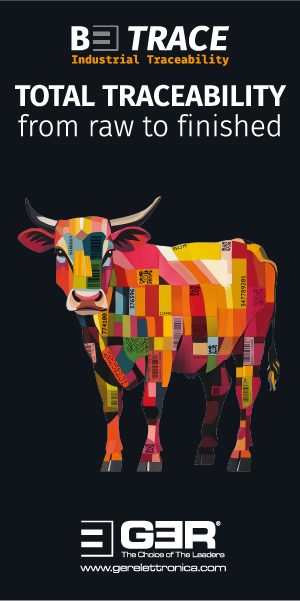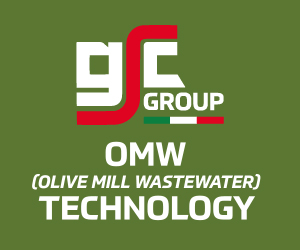Market Intelligence — 28.09.21
Macroeconomics
The world is in flux in many respects and we are, or will be, strongly influenced by it.
The elections in Germany have shifted the country towards green and to the left although we have to wait and see when a new government can be established and what it will mean for the future of the largest economy in Europe.
The Western alliance has to deal with additional new turmoil. The new defence pact between the UK, Australia and the US has led to a cancellation of orders for submarines in France, causing strong political upheaval.
Rising global energy prices are also causing considerable concern ahead of winter in the northern hemisphere. Not only are prices rising significantly for consumers, but the supply of natural gas is insufficient at the moment. As the price of oil is also rising steadily towards $80 per barrel owing to strong demand and the regulation of supply, consumers must expect significantly higher energy costs, among many other rising prices. Whatever the experts and national banks make of this, it will lead to a considerable increase in the cost of living for the normal household in the short term, and this usually leads to intense arguments at the next round of wage negotiations. In simple parlance, this is called inflation.
Meanwhile, Brexit is making an ongoing impact. In the UK there is a shortage of lorry drivers, which means that the supply of petrol at petrol stations is being affected, not by a lack of availability, but by a lack of transport. Overall there is a shortage of many workers who used to be available from other EU countries but who have now returned home.
The transport problem, however, is something that is reported almost everywhere in the Western world. There is a shortage of lorry drivers in the US too and on the continent in Europe. Likewise, economies are also complaining that many workers in the service and low-wage sectors are no longer available after the pandemic interruption. We do not want to get involved in the explanations, but one thing is certain: people have not disappeared, but are no longer willing to do this work for pre-coronavirus wages. As a consequence, this also means initially a restriction in the supply of goods and services and, if these are secured, higher prices.
The possible insolvency of China’s largest real estate developer, Evergande, also remains an unresolved risk for the global economy. Whether it is as big a risk as the collapse of Lehmann Brothers in 2008 or whether it remains limited to the Chinese market is irrelevant. If there are problems in the Chinese economy, many other economies will be affected as well.
Even without a domino effect like in the 2008 financial crisis, it would mean a considerable burden on economic development in the coming years. It is clear that construction has overshot real needs in China in recent years and that the warning voices have been proved right in the end.
Among many other interventions in China’s society, crypto-currency trading will be further hindered and restricted. Indirectly, this supports the US dollar alongside uncertainty about further political developments in Europe.
The stock markets also remain volatile and investors are aware of the increasing risks for economic development, in addition to questions over when and to what extent interest rates will rise again. In any case, the Federal Reserve has already indicated that in 2022 it will curtail the policy of cheap money. In Europe, they do not yet dare to say this openly because it would lead to great difficulties for the public finances of some countries. However, rising US dollar interest rates would certainly cause unrest in the financial markets in the emerging countries.
All in all, economic reality is beginning to gain the upper hand more and more and the placatory calm of the last few years, prolonged by the covid-19 crisis, is beginning to show cracks.
Leather Pipeline
Three crucial topics have dominated discussions along the leather pipeline in the past two weeks.
In Europe, these included the situation in the automotive leather sector and the return of the Lineapelle exhibition in Milan. Globally, transport problems remain a major issue and, as a small appendix, there is the slow-down in production in parts of China owing to the re-emergence of the coronavirus.
Let’s start with the situation in the production of automotive leather. For weeks, if not months, there have been repeated reports of problems with the supply of semiconductors in the automotive industry. Production cuts, short-time work and even temporary production closures made little impression on automotive leather.
Low slaughter numbers and the largely steady purchase of material from the major manufacturers in Europe kept things steady. The question of prices was also completely ignored. It is of course true that the available quantity has been constantly absorbed by the leather industry in Europe and therefore no pressure to act is building up. However, as always, just because it is not a problem at the moment does not mean that it is not a problem at all.
Nevertheless, the news that some larger companies will significantly reduce their production came as a surprise to some. Increasing slaughter in the coming months will suddenly coincide with a significantly reduced demand. The hope that this will be of a short-term nature has also been significantly reduced. Heavy, male hides, which are mainly used in the production of automotive leather, cannot easily be diverted to other sectors and certainly not at the prices they have reached in recent months.
Only a few weeks ago, most suppliers were firmly convinced that they could at least keep their prices stable, and maybe even increase them. Every warning voice was ignored. Under the new conditions and the problems with semiconductor deliveries in the coming months, which everyone now knows about, one can hardly assume a short-term improvement. As a result, it is very difficult to agree on price and delivery schedules; it is obvious that we are not dealing with a price problem, but with a demand problem. A rapid drop in prices would therefore not really help anyone in this situation. Significantly lower prices would not be able to stimulate any short-term increase in demand.
This means that in the coming weeks we will have to think about how to solve this phase together. On the one hand, no one wants to salt and temporarily store these heavy, male hides; they are usually only delivered chilled and just-in-time in Europe.
It is possible that there are enough market participants who consider the situation to be only temporary and are therefore prepared to buffer the goods in the coming months and thus take the pressure off the market. The opposite situation is also conceivable, that attempts emerge to solve the problem solely through the price.
Let’s move on to the Lineapelle fair in Italy. Those who have been going there regularly for many years were reminded of the good old days. Smaller, more local, but much more intense. It was a demonstration of haptics, optics and elegance, as always. In the reduced space, the number of visitors still looked impressive and even if some from overseas were missing, the industry took the opportunity to meet again and to gather information. The leather industry still thrives on personal contact and, above all, the impressions that buyers form of the articles presented. Seen in this light, the fair was a fountain of inspiration for many after such a long time.
We may have problems in mass production, and some big brands and manufacturers may be looking for an exit and to avoid leather, but this does not concern the fashion sector by any means, at least not yet. Leather manufacturers, whom we would count among the high-quality and creative businesses, reported without reservation a satisfactory result at the fair and an equally satisfactory order situation. However, this should not obscure the fact that these alone are not sufficient to process the daily volume of raw materials. They do, however, prove that there are still successful, loyal users of leather as a material; perhaps they are even the silent majority and perhaps the core from which something new and successful can be built again in the future.
Wherever leather has been transformed into an industrial, mass product for technical production reasons, the outlook is much bleaker. If you remove the special qualities of a product, then you cannot be surprised if, eventually, the product is replaced by alternatives that are easier to process, more scalable and cheaper. The trend of mass production against leather will be very difficult to reverse. We can probably only be happy that the alternative materials that are currently being discussed everywhere are not yet available in sufficient quantities, nor will they be in the near future. Otherwise, the trend would already have accelerated. At the moment, the problems in transport and the supply chain are more of a burden than the question of the decline in the use of leather. However, this may look very different in two or three years and, according to what we know today, it will be. Nevertheless, there is still enough time for leather to re-establish itself.
Let’s move on to the transport problems. These have direct and indirect effects. Seasonal leathergoods that do not reach the consumer markets in time, raw materials that cannot be shipped according to plan, and material bottlenecks that interrupt and delay the production of leathergoods are all poison for business and especially for cash flow. Whether slaughter levels are a little higher or lower does not play a major role. The raw material comes in fairly regularly and constantly, whereas the outflow does not. In previous years, the leather industry mostly worked with the lowest possible raw material stocks and this is now becoming a problem. Finding the balance that is appropriate for the current situation is difficult, if not impossible. Stockpiling and the optimism of a quick recovery gave a boost to commodity prices up until the summer. The current problems are now triggering the opposite. Besides all the other difficulties, however, extremely volatile raw material prices have always been one of the main problems of the leather industry.
In China, the last week was dominated by questions over how long tanneries and shoe factories in Fujian province will have to remain closed owing to small covid-19 outbreaks. To date, there has not been a complete lock-down, but the restrictions on people’s movements are forcing factories either to close or to reduce production for about three weeks. The holiday week at the beginning of October is included in this. However long the period and however severe the reduction, it is again a burden on production and on the whole supply chain. However, even if the outbreaks in China are comparatively small, China is also expected to see a significant drop in travel during the holiday week and thus probably also a drop in individual consumption. The problems surrounding the conglomerate Evergrande are also weighing on consumer sentiment.
The split market has generated no big news. Specialities and niches, like fine velour and heavy vegetable, continue to run. Collagen and gelatine are also growing. This varies regionally and sectorally, but basically new areas of use have emerged and seasonality also plays a role. With decreasing supply of beef split and, at the same time, increasing demand, the situation in this sector is likely to improve. Standard articles remain problematic for the reasons we have described above.
For sheepskins, special articles, which also require special raw materials, continue to do very well and tend to suffer from insufficient supply of raw materials. Mass-produced articles, such as standard garment leather, are simply not coming back and are no longer finding markets in the large department stores or via the internet. This means that there is simply no real price recovery and no improvement in demand in terms of volume. The fact remains that a significant part of the production of raw material is no longer being processed today.
The next few weeks will be challenging and interesting. While the market in the US entered a correction phase in late summer, the market in Europe has resisted this trend for a long time owing to lower kill. Nevertheless, one cannot escape the general market situation and we have been pointing out for some time that the valuation gap has been widening and will have to be closed sooner or later. So either hides in one market will become more expensive or hides in the other market will become cheaper. The market in the US cannot recover because of the large supply and increased inventories, and therefore prices in other regions must adjust accordingly.
With the difficulties that have now arisen in the automotive leather sector, which had supported high prices in the European market, the parameters are changing accordingly. In addition, after the relatively low slaughter levels in the summer, production is now increasing towards winter in Europe. This means that as the US comes out of the summer with sold stocks, Europe comes into the autumn with increasing beef production.
Leather production will of course also increase in the winter half-year. However, we currently have the difficulty that the flow of goods is extremely burdened by transport problems and increased transport costs. The open question for the next few weeks will now be the order situation in the furniture industry. Only this can mitigate the current trend with increasing volumes. In all likelihood, decisions will be made in this sector by the end of October, setting the tone for the winter for leather factories as well.
A controlled price decline and a correction to the exaggerated development in prices that we saw in the first half of the year would certainly be desirable and helpful and we hope that there are no unexpected surprises that would trigger erratic movements.
















